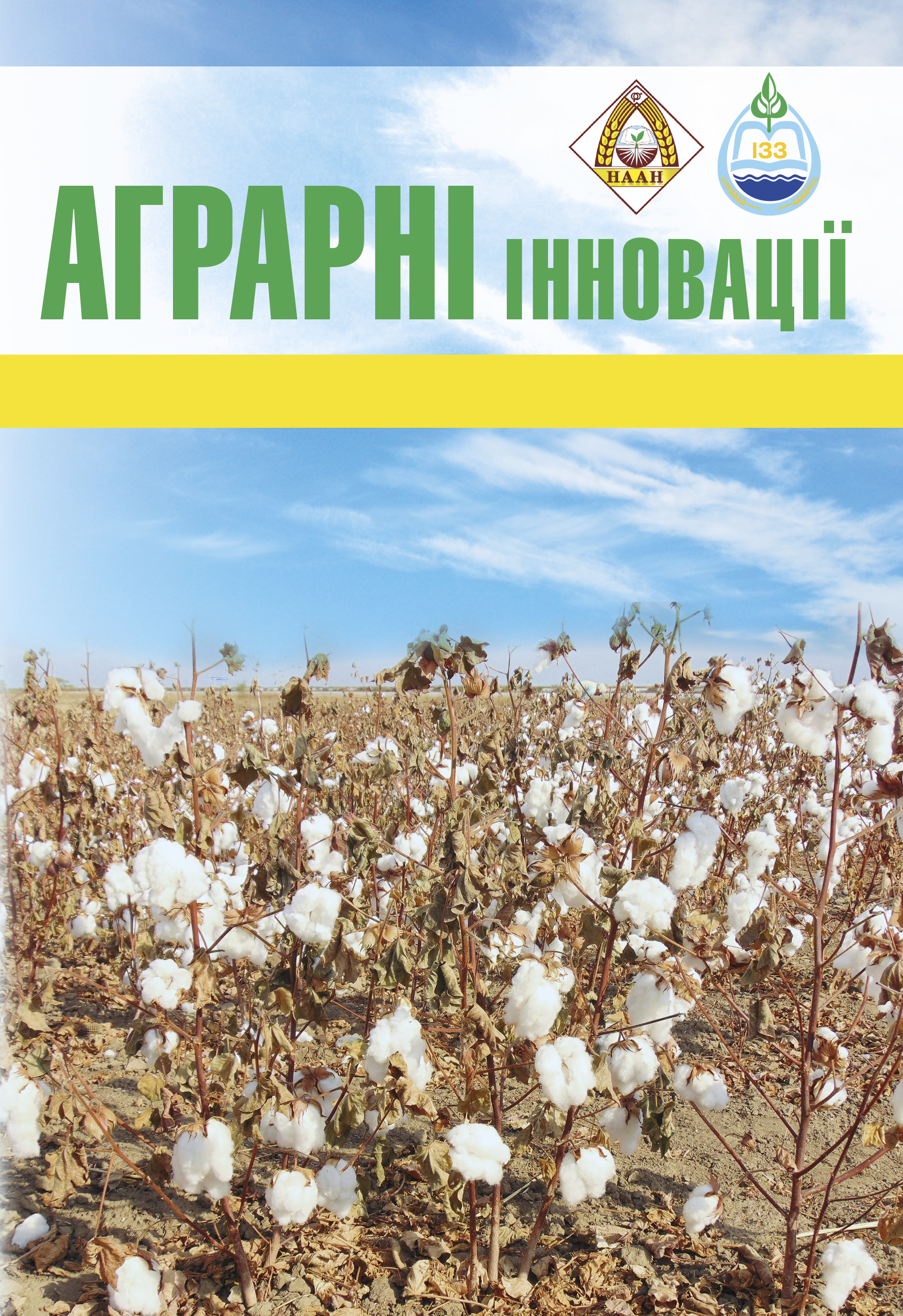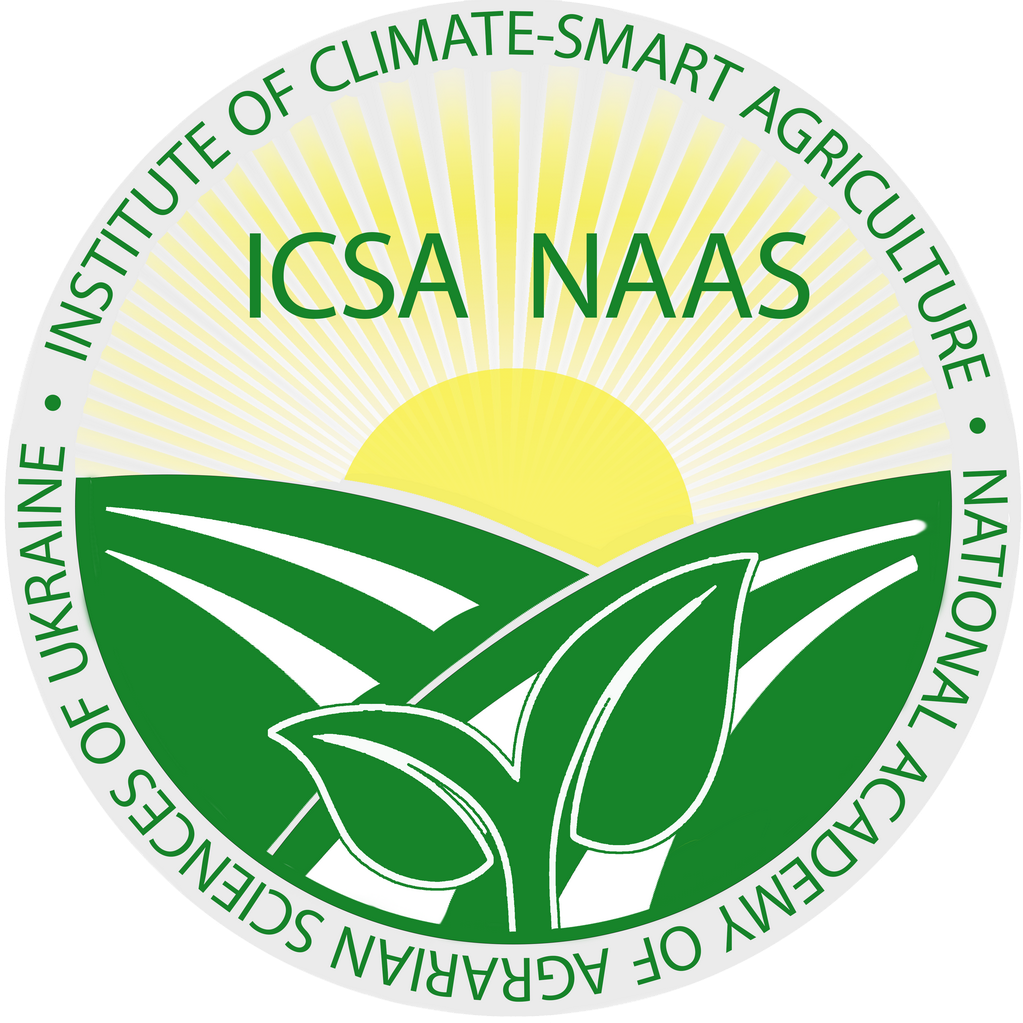Possibilities of new growth regulators in improving the ontogenesis of spring wheat
Abstract
Modern conditions of agriculture are characterized by a constant increase in the need for effective plant growth regulators, which are able not only to increase yield, but also to ensure the adaptability of crops to changing climatic conditions. Triazole derivatives – heterocyclic compounds, which have significant potential in the field of optimization of agricultural technologies, attract particular attention.Purpose. The goal was to determine the most effective concentrations and stimulants that significantly affect the increase in germination energy and laboratory germination of seeds of promising wheat varieties Meisa and Ksanthiia.Methods: For spring wheat varieties Meisa and Ksanthiy, an analysis was conducted to determine the characteris- tics of germination energy (4 days) and laboratory ger- mination (7 days) for treatment with an aqueous solution of promising growth regulators CAS-64 (potassium [1,2,4] triazolo[1,5-c]quinazoline-2-thiol), CAS-79 (potassium tetrazolo[1,5-c]quinazoline-5-thiol) and CAS-67 (5-(2-ami- nophenyl)-1H-1,2,4-triazole-3-thiolate). Distilled water was used as the control. Working solutions were used in concentrations of 0.01%, 0.02% and 0.04%. Germination was carried out in rolls of filter paper. Results. The effect of CAS-64 and CAS-79 on germination energy and labo- ratory germination of wheat varieties Meisa and Ksanthiy is characterized by certain patterns that depend mainly on the concentration of substances, and not on the genotype of plants. According to the results of the action analysis, the maximum indicators for both varieties were recorded at a concentration of 0.02%. Further increase in concen- tration to 0.04% caused a significant decrease in germi- nation energy and laboratory germination (which indicates the toxic effect of this concentration. The difference in the effect of CAS-79 and CAS-64 was significant only for the variety Ksanthiy (F=3.98; F0.05=3.49; P=0.05). Under the action of CAS-67, the maximum positive effect for germi- nation energy was achieved at a concentration of 0.01%, while already at 0.02% the effect was lower than the con- trol. Discriminant analysis confirmed the closeness of the effects of CAS-64 and CAS-79 on seeds, grouping these compounds together and confirming the absence of sig- nificant differences between them. The compound CAS- 67 is isolated separately due to its significantly weakerstimulating and clearly negative effect at increasing con- centrations. According to the results of the study on pho- tosynthetic activity, the stimulating effect on plants was again significantly The substances CAS-64 and CAS-79 were isolated at a concentration of 0.02%. Findings.Thus, the most promising for stimulating the germination of wheat seeds of the varieties Meisa and Ksanthi are the compounds CAS-64 and CAS-79 at a concentration of 0.02%. The use of higher concentrations (0.04%) of all the studied substances is toxic and inappropriate. The drug CAS-67 has limited potential for use as a stimulant, and at high concentrations it exhibits significant toxicity.
References
2. Cann D., Hunt J., Rattey A., Porker K. Indirect early generation selection for yield in winter wheat. Field Crops Research. 2022.Vol.282. 108505. doi: 10.1016/ j.fcr.2022.108505
3. Essam F., Badrya M., Aya M. Modeling and forecasting of wheat production in Egypt. Advances and Applications in Statistics. 2019. Vol.59, № 1. Р. 89–101.
4. Jaradat A. Simulated climate change deferentially impacts phenotypic plasticity and stoichiometric homeostasis in major food crops. Emirates Journal of Food and Agriculture. 2018. Vol. 30, № 6. Р. 429–442.
5. Hongjie L., Timothy D. M., McIntoshc, R.A., Yang, Z. Breeding new cultivars for sustainable wheat production. The Crop Journal. 2019. Vol. 7, № 6. Р.715–717.
6. Li H.J., Timothy D. M., Mc Intoshc R.A., Zhou Y. Wheat breeding in northern China: achievements and technical advances. The Crop Journal. 2019. Vol. 7, № 6. Р. 718–729.
7. Miedaner T., Juroszek P. Climate change will influence disease resistance breeding in wheat in Northwestern Europe. Theoretical and Applied Genetics. 2021. Vol. 134. 1771–1785.
8. Sushchenko I. G., Kabar A. M., Kovalenko S. I., Lykholat Y. V., Sayenko A. A. Evaluation of the influence of a new triazole derivative on the period vegitation and 1st phase of growth of creeping clover seeds white (Trifolium repens L.). Ecology and Noospherology. 2024. Vol. 35. Р. 78–83.
9. Tsenov N., Atanasova D., Stoeva I., Tsenova, E. Effects of drought on grain productivity and quality in winter bread wheat. Bulgarian Journal Agricultural Sciences. 2015.Vol. 21. Р. 592–598.

This work is licensed under a Creative Commons Attribution 4.0 International License.






